RECENT AUCTION SALES
LATEST AUCTIONS
"Once upon a time", just a few scant years ago, the Marantz TA170AV was the unchallenged champion of "Most Bang for the Buck" in the vintage receiver (pre-1990) world. Just imagine, a fully operational 165 w/ch RMS TOTL Marantz Receiver that could routinely be had for less than $20 on eBay, or off the shelf at the local thrift (often with the remote control)! Literally anyone could be an "audiophile". Power to the people!
Despite its toy-like appearance, the TA170AV was, in fact, the 4th most powerful (by Marantz's published specifications) stereo receiver ever sold in the US by Marantz, eclipsed only by the Model 2600 (300x2), 2500 (250x2) and 2385 (185x2) and followed by the TA-165 (165x2), TA-150 (150x2), TA-135 (135x2), 2330 and 2330B (130x2) and 2325 (125x2). And, in 1987, believe it or not, the TA170AV was the most powerful receiver available, by published specification, just barely beating out the Luxman R-117.
Well, the word got out and, judging from the most recent auction sales on eBay, the TA170AV is no longer going "dirt cheap". Weighing in at almost 35 lbs., it was certainly the most powerful of a group of "component receivers" somewhat cynically marketed during the mid-80's by a handful of m'anufacturers (H.H. Scott, JVC, Kenwood and Pioneer to name but a few). Stealing a page from Luxman, Marantz referred to them as "Tuner-Amplifiers", hence the TA (and not what you think), but in fact they were receivers only designed to look like separates but in a bigger, mostly air-filled box, with a deep indentation across the front to foster the illusion of a seperate tuner and integrated amplifier. But, while the TA170AV may look like a Fisher-Price toy with all its LEDs lit up it is a rather serious piece of audio gear, as can be easily surmised from a revivew of the Service Manual.
The venerable H.H. Scott firm was on its last legs by this time, but as a last gasp launched a very similar model in their STA1510, rated at 150 w/ch RMS and retailed for $549.95. However, if you've ever seen one, the overall design looks very rushed and poorly conceived, certainly no competition of the TA170AV.
The TA170AV was conceptuatlized for the "rack systems" market that was popular in the mid-1980's. In fact, I have been in contact with the "father" of the TA170AV, one Richard "Rick" Jordan, who was the VP of Product Development for Marantz USA from 1974 to 1987, including the "Golden Age" of Marantz receivers, and he advised me that the entire TA series actualy sold quite well, contrary to popular opinion. They were marketed as part of Marantz's "Classic Series" of relatively affordable gear. So, obviously, some corners were cut.
But, to my delight, Richard also confirmed that John Ballantine, who designed the face of the TA170AV, also designed the exterior of the Marantz SR8100DC, another one of my favorite looking Marantz receivers, 5 years before. And, John also crafted the look of the "holy grail" Marantz 2600 and 2500 receivers as well. So the TA170AV comes from a very distinguished design lineage. My only real gripe is that the highly sculpted face should have been made out of metal, not plastic.
Rick was also kind enough to provide the following background information about how the TA170AV and its kin came to be:
"Around that time (1979) Phillips (Netherlands) had bought the off-shore assets of Marantz, but Marantz USA kept the North American territory. Next Phillips played hardball about supplying receivers to Marantz USA as North America was the most desireable distribution Phillips wanted. A big part of the issue was Magnavox (owned by Phillips) tried selling hi-fi components/rack systems built by Marantz Japan, but unfortunately was a big commercial failure."
"Next, to cover the receiver category, Marantz USA went to Marubeni (Osaka, Japan), 'Benytone', who built audio products for Carver and SAE, for receivers. It was chaotic times and the end of my direct involvement with Marantz.....but not the end of the story. I was hired by Dynascan as a consultant and designed/sourced a line of receivers built by Rotel Taiwan for Marantz USA. Dynascan had bought the Marantz USA brand and North American territory from the Tushinskys (owners of Superscope). Ironic....after I left Marantz, in the following 18 months they hired (3) different VPs for product development but couldn't find a good fit..."
Despite the gilded plastic facade the TA170AV has an excellent sounding and powerful amplifier section, with 8 discrete output transistors: Toshiba 2SA1301s and 2SC3280s (you can see 'em all in the interior photos on the right), identical to those used in some higher end gear I've seen. The MSRP in 1987 was a very reasonable $650.00 for a TOTL Marantz with massive amounts of power, remote control, left and right independent 5-Band EQs, early video switching and and pre-out/main-ins out in back. Certainly, a good value. And, despite all the skeptics, the TA170AV almost met its specs (video) more than 30 years later when my friend, Tom Ishimoto, a former Manager of Product Development for Marantz (and the electronics designer of the Marantz SR8100DC Receiver) benchtested it in 2008.
Those who have actaully heard a TA170AV in comparison to the more legendary Marantz receivers are also favorably impressed. No less an authority than Audiokarma's "SoCal Sam", who has owned every single one of the Great Stereo Receivers, including the Marantz 2600, had this to say in one of their forums: "I used to have the TA170AV which is from the same lineup as your TA100 set. Despite the cheapest plastic that would be suitable for product packaging, the 170 sounded great. For laughs, a buddy and I compared the TA170AV to the King Of The Hill 2600 receiver to see and hear how far Marantz had fallen. Soundwise, it turns out to be not much. The TA170AV has credible full range sound that hits far above the pedestrian looks." Sam has echoed similar sentiments elsewhere.
That "buddy", by the way, was me. Sam had a sophisticated swtiching system that allowed us to swictch back and forth between the TA170AV, which Sam had sold to me for $12, and the 2600 playing a Shelby Lynne CD on a TOTL Luxman D-109 CD Player with Yamaha NS1000 Berylium cone speakers. When asked which recevier sounded better, on certrain tracks, in blind testming Sam frequently selected the TA170AV as the better sounding and acknolwedged there just wasn't much of an audible difference between the two when played back on identical equipment.
But, this came as no suprise to me. As much as some people today might snicker at the TA170AV, and its plastic-faced kindred, it was nevertheless part of a product lineup that included such iconic pieces as the stunning 1986 PM94 Integrated Amplifier, with which it shared much of the same basic circuit design and audio technology.
Lastly, also of some interest, is that the TA170AV came out just before both Richard Jordan and John Ballantine went elsewhere later 1987 and Marantz then hit "rock bottom" in the late 80's with the 1988 Marantz SR-3600, which wasn't even produced by Marantz! The SR-3600 clearly suffered without John's artistic sensibility.
As a collector, I like to have the related marketing materials for all my units. Mr. Jordan did not recall any brochures specifically for the TA170AV. The closest I have come is this brochure featuring the predecessor model from 1985, the TA150, which was slightly less powerful, and did not have any of the AV features, but appears, otherwise, almost identical.
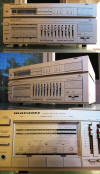 |
 |
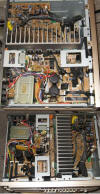 |
 |
 |
|
RECENT AUCTION SALES
LATEST AUCTIONS
No list of Great Stereo Receivers would be complete without the legendary Maratnz Model 18. In 1967 it was the most expensive stereo receiver in the world and, without dispute, the best. It was the very first Marantz Receiver and the progenitor of all that followed. In fact, it was the last Marantz product created by the "dream team" of Saul Marantz, Dick Sequerra, creator of the legendary Marantz 10b Tuner (video shows unboxing an NIB 10b) and the much later Sequerra FM-1 Tuner and Sid Smith (designer of the Marantz 7, 8 and 9 Amplifiers), the very people that created the legendary Marantz reputation. It was manufactured by hand Woodbury, New York, unlike the follow-up Model 19, many of which were "Made in Japan". Simply put, the Model 18 is about as pure a Marantz receiver as you can get.
You can see the entire Marantz lineup for 1968 in this Full Line Brochure.
The Model 18 featured much of the technology and circuit design of the Marantz 10b and the 8c Amplifier. And, it was the very first receiver in the world with a built-in oscilloscope, side-mounted heatsinks and the first Marantz product ever to feature the imaginatively titled "Gyro Touch Tuning" , which then became a Marantz hallmark through the 70's. Here's a video I made of the 18's 'scope in action.
The Model 18 cost a whopping $695.00 when new (around $5,0000 in today's dollars) and was rated at 40 w/ch RMS, but was very conservatively rated. It was actually tested at almost twice that in the Test Report at upper right. This article has some lovely photos of one so you can see what the "finest in the world" looked like in 1967.
The Model 18 was followed in 1969, after the 18's creators had left Marantz, by the upgraded 55 w/ch RMS Model 19, which is generally similar, except for a lightly revised faceplace, and a slight increase in rated power (although I'm sure the circuitry is virtually the same), which ended production in Japan around 1971.
For the sake of comparison, the 18 and 19 are shown at middle left (18 on top, 19 on bottom). At the lower left is a Model 18 underneath an SR9000G from 1980. It's amazing how much had changed in only 13 years, during which Marantz receivers became iconic. The SR9000G paid homage to the 18 by using the same fonts.
So, the 18 is certainly one Receiver that deserves its legendary status. I've compared mine with the highly regarded Luxman R-117 (one of the most powerful receivers ever made) and the 18 beats it handily in overall FM reception and clarity and gives up very little in overall sound until the volume levels get uncomfortably high.
|
|
 |
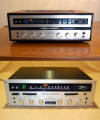 |
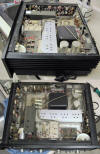 |
 |
|
Harman/Kardon 990Vxi (1989): 90x2 RMS
RECENT AUCTION SALES
LATEST AUCTIONS
Harmon/Kardon's top Receiver of the 1980's, the Harman/Karodn 990Vxi, MSRP'd for a lofty $1,099.00. But, it sure doesn't look like it cost that much to build and it offered only 90 w/ch RMS. But, IMHO, these were some of the best sounding watts you could get in a stereo receiver since the 990's square wave response from 20-20kHz was almost perfect.
I've actually seen it benchtested myself and will attest that no other receiver I've seen even comes close to reproducing square waves so accurately and consistently all the way across the audible spectrum. It is truly the "Square Wave Champ" in my book.
Harman Kardon was really late to the game with infrared wireless remote technology and so in 1989 the 990Vxi was also the first H/K Receiver with a remote. It seems almost unbelievable that an audio company whose origins went back to the early 50's, and created the very first receiver, would be so late to the party.
But, all is forgiven. The ultra-wide frequency response, minimal TIM and high current (60 amps)/high voltage output circuitry no doubt contribute to the 990's stellar performance. From a listening standpoint, the 990 literally lifts the veil over all the delightful nuances in most music that solid state electronics tend mask to one degree or another.
Despite its somewhat pedestrian appearance, the 990 has a fairly passionate following on eBay. If you can get behind the "Plain Jane" wrapper, the 990 really delivers. However, unfortunately, the three (3) that I have owned tended to be unreliable and only one (1) is currently fully operational.
|
|
|
 |
 |
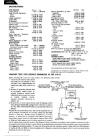 |
|
Harman/Kardon 795i (1987): 70x2 RMS
RECENT AUCTION SALES
LATEST AUCTIONS
Before the 990Vxi, the Top of the Line H/K Receiver was the Harman/Kardon 795i, the top offering from 1985 to 1988 and MSRP'd for $760.00. Rated at 70 w/ch RMS it was one of the few TOTL Receivers of its era that did not include a wireless remote.
Of particular significance to a collector, the 795i was also the last of H/K's legendary "Twin Power" Receivers. Gone, were the twin power transformers (those disappeared with the 670i), but there were still twin sets of filter caps, two for each channel.
The 795i was the ultimate version of the series starting with the 680i (and succeeded by the 690i) that emphasized the sonic theories of Dr. Matti Otala. The 795i and the 690i are virtually indistinguishable on the outside, however, the 690i is rated at only 60 w/ch RMS. And, like the 990Vxi, it also has exceptional square wave response.
|
|
 |
 |
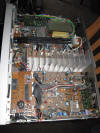 |
Marantz SR8100DC (1982): 70x2 RMS
RECENT AUCTION SALES
LATEST AUCTIONS
The champagne-toned Marantz SR8100DC was designed shortly after the Phillips takeover. My friend Tom Ishimoto, while he was a head of product development at Marantz, crafted the electronics as the spearhead of Marantz's new "Solid Gold Sound" advertising campaign, see ad middle left. The facade was designed by John Ballentine, who also designed the Marantz Model 2500 and 2600. In fact he designed "the look" of all Marantz receivers from 1974 through 1987.
Incidentally, while he worked at Onkyo, Tom developed the servo-lock and quartz-lock tuning circutiry that were quickly adopted by most ot the major audio manufacturers. So, rest assured that the Quartz Synthesizer tuner in the SR8100DC was the best Marantz had to offer. The Stereo Review test report, bottom right, clearly establishes the SR8100DC's excellent overall performance. And, here's a video showing it in operation.
As one of the first Receivers to incorporate a microprocessor, the SR8100DC was (I believe) the very first to incorporate a built-in digital timer allowing owners to have it turn on and off to a specific function as specific times each day. This was a huge step forward from the "egg timer" featured on Kenwood's Model 11. It also had a "three martini" sounding 70 w/ch RMS DC Amplifier. And, for $750.00 MSRP it simply looks fantastic! .
Several years ago, Tom updated the phono pre-amp of my 8100DC to modern standards and also doubled the filter caps so it can be bridged with another SR8100DC to produce a 200 wpc RMS "Super Receiver". I'm looking for that second companiion SR8100DC now.
|
|
|
 |
 |
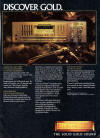 |
 |
 |
|
Yamaha R-9 (1985): 125x2 RMS
RECENT AUCTION SALES
LATEST AUCTIONS
Not really much to look at, except for the bright red digital display, the $900.00 MSRP Yamaha R-9 from 1985 had something no other Receiver has ever had, a switchable true Class-A amplifier called "Auto Class A". I consider the R-9 as the overall top performer of Yamaha's distinguished line of higher-end focused stereo receivers. The RX-1100 which followed was generally similar to the R-9 but replaced the Auto Class A circuitry with "video enhancer" circuitry, in a nod to the growing interest in home theater at the time. So, with the Auto Class A circuit, the R-9 is the clear winner soundwise of the two and the last pure Yamaha stereo receiver. The end of the line.
In operation, Auto Class was only good for about 10 w/ch RMS max and, beyond that, would automatically convert to a conventional Class A/B output up to its rated 125 w/ch RMS. The Class A feature is more fully explained in this video. However, according to the December 1985 Test Report in High Fidelity: "The amplifier is powerful enough that, for most purposes, it should be able to operate in Class A virtually without interruption: Only transient peaks are likely to exceed the Class AB threshold."
Like the R-100 before it, the R-9 also featured Yamaha's proprietary Zero Distortion Rule amplification and Dynamic Noise Canceller circuitry It also featured Yamaha's innovative Auto DX Tuning, automically setting the IF amplifier selectivity to DX (high selectivity) or Local (low selectivity) depending on the quality of the received signal. The tuner section was thus automatically optimized for both weak and strong stations, providing the best possible performance under all reception conditions. It was in fact two FM tuner sections, one with a Quartz Synthesizer and the other with an analog "comparator" circuit. And, I must admit that I am quite impressed with this Yammie's ability to track difficult stations. Read the very detailed brochure for the full story.
While I am generally not a huge fan of the "Yamaha Natural Sound", which sounds rather bland (others would say "neutral") to my ears, I can clearly hear a difference when the R-9 is in Class A mode. The music is sumptuously detailed indeed and is rich and full in comparison to its ordinary Class AB mode.
 |
 |
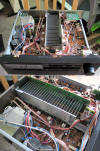 |
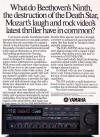 |
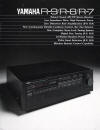 |
|
McIntosh MAC 4100 (1978): 75x2 RMS
RECENT AUCTION SALES
LATEST AUCTIONS
Yes, I paid way too much for my "pristine" McIntosh MAC 4100 ($800 in 2007) but I must admit that it is well made, as detailed in the owner's manual, and just seems to get better as time marches on. In fact, in 1978, it was the world's most expensive Receiver with an MSRP of $1,999.99, although it was no monster, rated at only 75 w/ch RMS into 8 ohms. Note: Some people on eBay erroneously claim it has a 100 w/ch output, but that is only into 4 ohms, as you can plainly see from the manufacturer's specs, on the right, bottom. and, the MAC 4100 brochure confirms this
But, unlike any other receiver of the era, it was "Made in USA".
Although the MAC 4100 was not the first receiver from the legendary company, it was the first marketed as an actual "McIntosh Labs" product. The prior models were from a sub-division called MAC.
The 4100 is true classic in every respect. It also had an unusually long production run, from 1978, at the height of the "Power Wars", until 1985, long after other manufacturers had moved on to quartz synthesized digital tuners, electronic switching and remote controls. I believe this may be the longest production run of any single model of receiver, which makes the 4100 very special indeed, especially considering its lofty price of admission!
When all is said and done, for all intents and purposes, the MAC Receivers, for their rated power, were simply the most expensive receivers ever made by anyone. So, the 4100 is a true iconoclast, just like a Rolls or a Bentley. Clearly, a "must have" in any vintage receiver collection.
 |
|
 |
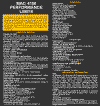 |
Sony STR-GX10ES (1987): 150x2 RMS
RECENT AUCTION SALES
LATEST AUCTIONS
The Sony STR-GX10ES was arguably Sony's last great stereo receiver. Rated at 150 w/ch RMS for a $1,200 MSRP it was also the most powerful stereo receiver Sony ever made. It featured the "Gibraltar" acoustically inert chassis, made out of a heavy anti-resonant composite material to eliminate standing waves. This was similar to what Kyocera attempted to do earler with the ceramic bases on their separates, but, sadly, not on their receivers.
The "Gibraltar" (solid as a rock?) chassis was molded "in a sound-absorbing design" of a resin composite that included calcium carbonate (marble) and glass fiber. It was claimed by Sony to be 2,000 times stronger than steel.
The "Spontaneous Twin Drive" imprinted on the front panel refers to the GX10ES's power-supply design. This feature included separate rectification and voltage regulation for the voltage-amplification stages (the majority of those in such a receiver) and for the final, current-output stage. The purpose was to prevent "voltage sags" created by heavy current drains at the speaker outputs from distorting waveforms passing through earlier stages. To further prevent undesirable cross-influences, voltage regulation for the control circuitry was independent of that for the audio.
The GX10ES was somewhat anonymous in its day, without any advertising support that I have found, so not much is known about it. However, a Test Report from the June 1988 Audio confirms its overall performance and provides a meaningful set of test results. Of particular interest is that the amplifier section, unlike almost all receivers, was stable into 2 ohm loads and put out over 26.2 dBW (over 300 watts) in dynamic power at 1 kHz! It also had a rather healthy damping factor of 115
Also, of some significance, the GX10ES was sold with the RM-103 leaning remote control, one of the industry's first.
The photo at right bottom is of my GX10ES atop the contemporary CDP-C801ES CD Changer.
|
|
 |
 |
 |
 |
|
Luxman R-117 (1987): 160x2 RMS
RECENT AUCTION SALES
LATEST AUCTIONS
Without question, the Luxman R-117 was Luxman's best Receiver ever. Unveiled in November 1987 at an MSRP of $1,200.00, just before the advent of the "Home Theater Revolution", it should not be confused in any way with the "BPC" of the mid-80's as it was rated at 160 w/ch RMS with "dynamic headroom" of 700 w/ch RMS into 2 ohms! It helped restore the Luxman brand to the head of the pack (as exemplified by the stunning M-6000 Power Amp. from 1975), a position it lost in the early 1980's when it was taken over by Alpine Electronics and came out with superfluous, style-driven designs like the Luxman RX-103 "Suckface" Receiver.
The R-117's power supply featured a dual-rail design with a "triple-shielded" power transformer. The tuning section was superb as well and the control flexibility was unrivaled. It also featured Luxman's proprietary "Star Circuit" design (to shorten signal paths) and critically acclaimed "Duo-Beta" negative feedback circuitry.
Although perhaps not the absolute best sounding stereo receiver ever, the R-117 is at least in the "Top 5" and it is without a doubt one of the most capable.
I currently have two R--117s in daily use. One is shown at the upper left atop the 200 wpc M-117 Power Amplifier, from the same lineup, which is based on the Luxman M-03. The M-117 was designed to be mated with the Luxman TP-117 tuner/pre-amp (with twin digital tuners), reviewed in the September 1989 issue of Stereo Review at pg. 64, which I also have (but hooked up to an H/K 870 "twin power" amplifier) as Luxman's top separates setup of that era. The other sits beneath a Luxman D-109 CD Player and Sony PS-X7 turntable.
You can see all the Luxman products for 1990, including the R-117 in this Luxman Brochure. And, here's a video detailing the R-117's exemplary performance on a test bench.
 |
 |
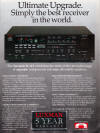 |
 |
Carver Receiver 2000/MXR-2000
(1985):
200x2 RMS
RECENT AUCTION SALES
LATEST AUCTIONS
At an
MSRP of $1,595.00, the Carver 2000 was certainly one of the most
expensive receivers of the 1980's, tied with the
NAD 7600, and only beaten by the
McIntosh receivers.
When it was introduced in 1985, as a beefed up
Carver "The Receiver" (MXR-130) it was a "world
beater" and it easily had the bragging rights of
"the most powerful receiver in the world" and
and
overpowered the competition at the time (see
1985 Receiver Directory).
Yet, for its rated 200 w/ch RMS, the Carver
was a lightweight at only 32 lbs. but that was
because of its
Magnetic Field Amplifier.
It remains by
far the most powerful stereo receiver ever sold by
Carver, and was from the same time
period that Caver was at
the height of his creative powers, capped by the
stunning $17,500 "Silver Seven" monoblock
amplifier.
The Carver 2000 also featured
all of
Carver's
other signature circuitry
of the era including the imaginatively named
Sonic Holography
(SH) in the pre-amp and
Asymmetrical Charge Coupled Detector
(ACCD) in the
tuner. Carver even wrote
this article explaining Sonic Holography in
great detail. However, I can hear only a subtle
difference with the SH active on the Carver 2000, but a
dramatic loss of hiss on FM Stereo broadcasts
with the ACCD. (However, in all fairness, I'm not too sure that I took all the
time necessary to properly set my system up for the Sonic
Holography, but all of this is explained in
great detail in the
Carver 2000 Manual.)
Also impressive is that, according to the
Manual, the 2000 prevents the outputs
from being damaged by shutting off
should the following occur: Excessive
out-of-phase infrasonic oscillation - below 20
hz (eg. dropping tonearm); significant DC offset
- 2 to 4 volts DC component at the outputs;
sustained clipping; internal low-level supply
imbalances and faults; amplifier overheating 90
degrees celsius thermal sensor; and, "excessive
voice-coil temperatures" (monitors long term
average power output, frequency weighted for
tweeter protection). Frankly, I don't know of
another "vintage" receiver with this level of
protection.
The esoteric Bob Carver circuitry aside, I do love the imposing
styling of the 2000, especially those glowering power meters,
and the real walnut veneer side panels, which
unlike its mid-80's competitors, harken back to the
receiver glory days 70's.
Although Bob Carver himself was controversial, there's no
disputing to performance of the Carver 2000:
here's a
mostly favorable review.
My Tech tells me the Carver receivers were made in
Japan by an OEM outfit called "Benytone".
Unfortunately,
the Carver 2000s acquired a reputation for bad solder joints
on the main board, but unlike my prior MXR-130,
fortunately there are no burned
areas around the resistors in my Carver 2000, as you can clearly
see in the photo on the bottom right. Lucky me!
Given the high performance level, and unique Carver
circuitry, the Carver 2000 is truly unique in the world of
vintage stereo receivers.
|
|
|
 |
 |
 |
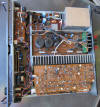 |